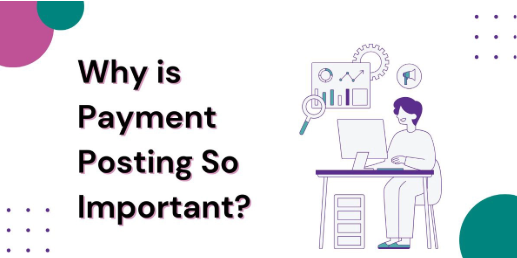Introduction: Behavioral health billing is evolving rapidly in 2025, with new codes, policies, and technologies reshaping how providers get paid humanmedicalbilling.com. The demand for mental health and substance use treatment has surged in recent years, especially after the pandemic, and insurance rules are racing to keep up. As a result, medical billing for behavioral care has become more complex adsc.com – providers must stay on top of coding updates, insurer requirements, and compliance changes. In this post, we’ll break down the latest behavioral health billing 2025 developments and offer tips to help you navigate insurance claims for behavioral care with confidence.
Healthcare providers are seeing new CPT codes, expanded telehealth reimbursement, tighter documentation standards, and shifting payer trends in mental health reimbursement. By understanding these changes – and leveraging tools like AI-driven revenue cycle management – you can reduce denials and maximize what your practice is paid. Let’s explore the key updates and strategies for successful behavioral health billing in 2025.
Key Billing Code Updates for 2025 (CPT & ICD-10) 🏷️
New and Revised CPT Codes: The American Medical Association (AMA) and CMS introduced significant CPT and ICD-10 code updates for 2025, reflecting advances in behavioral health diagnostics and treatmentadsc.com. Notably, psychotherapy codes have refined definitions and documentation rules. For example, CPT 90837 (60+ minute psychotherapy) now has clearer guidance on documenting extended sessions – providers are encouraged to record start/end times and use add-on prolonged service codes if a session runs well beyond an hourmedcaremso.com. Similarly, CPT 90834 (45-minute therapy) emphasizes recording exact session length in notes to justify using that codemedcaremso.com. In practice, clinicians should chart the session duration (e.g. “2:00–2:50 PM, 50 minutes”) to support the CPT billed. These refinements help ensure coding accuracy for time-based psychotherapy services.
Digital Therapy and Monitoring Codes: 2025 brings new billing codes to address the rise of digital mental health tools. Medicare’s Physician Fee Schedule created three new HCPCS codes (G0552, G0553, G0554) to reimburse FDA-approved digital behavioral health treatment devices (e.g. prescription therapy apps for substance use or insomnia) when used under a clinician’s care plancms.gov. Likewise, the AMA added CPT codes (e.g. 989X1 for initial setup of digital therapy and 989X2 for monthly monitoring) to cover digital mental health interventionsadsc.com. These codes enable providers to bill for remote therapeutic monitoring and digital therapeutics alongside traditional therapy. Tip: If you prescribe or recommend mental health apps or wearables, document patient use and outcomes so you can utilize these new codes for additional reimbursement.
Telehealth Codes Made Permanent: In great news for behavioral health, many telehealth billing provisions are now permanent or extended. The 2025 CPT code set expanded telehealth designations for psychotherapy, meaning most common mental health services (90832, 90834, 90837, etc.) can be billed for teletherapy sessions just as for in-person, as long as you use the correct modifiers and place-of-service indicators (more on that below)medcaremso.com. Audio-only psychotherapy in certain cases is also recognized with appropriate coding, reflecting the continued role of phone sessions for those without video accessadsc.com. In short, the telehealth flexibilities introduced during COVID-19 have largely been made permanent for behavioral care in 2025, removing geographic restrictions and allowing patients to be seen from homemedcaremso.com.
Collaborative Care & Integration: There are also updates to codes supporting integrated behavioral health. Medicare increased reimbursement for Collaborative Care Model (CoCM) and general Behavioral Health Integration codes (e.g. 99484, 99492–99494) and broadened the types of providers who can participatemedcaremso.comadsc.com. In 2025, licensed counselors and marriage/family therapists can serve as care managers on CoCM teams, for example, enabling primary care practices to bill CoCM codes while bringing in these mental health specialistsmedcaremso.com. This promotes holistic care and allows behavioral health clinicians to collaborate with physicians under billing arrangements that were previously limited. If you partner with primary care clinics, ensure you take advantage of these collaborative care codes to support interdisciplinary treatment.
ICD-10-CM Diagnostic Updates: Don’t forget to update your ICD-10 coding resources as well. Each year brings new or revised mental and behavioral health diagnosis codes reflecting the latest DSM-5-TR classifications and research. The ICD-10-CM updates for 2025 include additions for emerging conditions and refined descriptors for existing diagnoseshumanmedicalbilling.com. Using the most current diagnosis codes is crucial for claim acceptance. Double-check that your EHR or billing software is updated to the 2025 ICD-10 code set so that diagnoses on your claims are valid and specific. This will help avoid denials for invalid codes and ensure you’re capturing the complexity of your patients’ conditions accurately.
Payer Trends in Behavioral Health Reimbursement 💳
Staying reimbursed in 2025 isn’t just about codes – it’s also about adapting to payer trends. Insurance payers are expanding coverage for mental health, but with some caveats. For instance, Medicare and many private insurers have permanently expanded telehealth for behavioral care (no more geographic or originating site limits), allowing therapy from home and even audio-only visits to counthumanmedicalbilling.com. This greatly improves access and lets you see more patients (including rural or homebound clients) with reimbursement at parity to in-person sessionshumanmedicalbilling.com. Commercial plans often follow Medicare’s lead, though policies can vary by state and payer.
At the same time, providers still face familiar hurdles with insurance. Prior authorizations remain a common requirement for certain behavioral health services, despite mental health parity laws. Many plans insist on authorization for extended therapy beyond a set number of sessions or for higher levels of care (like inpatient rehab)humanmedicalbilling.com. Failing to secure pre-auth can mean denied claims, so practices must stay proactive: always verify if a service needs approval before the patient is seen. Additionally, be aware that parity enforcement is increasing – federal rules updated in late 2024 aim to ensure insurers’ restrictions on mental health care (like visit limits or auth requirements) are comparable to medical/surgical carehumanmedicalbilling.com. You may start seeing insurers adjust their policies in 2025 to comply, but for now authorization headaches and other administrative barriers haven’t vanishedhumanmedicalbilling.com.
Variable Coverage & Benefits: Another trend is the uneven landscape of benefits. Medicaid and commercial plans differ widely in behavioral health coverage. Some Medicaid programs that expanded tele-mental health during the pandemic have since scaled back certain allowances, while others maintained broad telehealth coveragehumanmedicalbilling.com. Insurance plans also vary on network coverage for specialists (e.g. some limit visits to licensed clinical social workers or won’t cover couples therapy). Always check each patient’s eligibility and benefits in advance – verify what services are covered, session limits, and patient cost-sharing. In 2025 it’s wise to train your front desk or billing staff to run real-time eligibility checks for behavioral health benefits before the first appointment. This prevents surprises for both you and your patients.
Pressure on Reimbursement Rates: Financially, behavioral health providers still face relatively lower reimbursement rates compared to other specialties. Medicare’s physician fee schedule for 2025 included an almost 3% cut to the conversion factor, which squeezes payments across the boardhumanmedicalbilling.com. While Congress has occasionally offset these cuts, many practices feel the pinch. Commercial insurers, too, often negotiate lower fee schedules for psychotherapy than for comparably timed medical visits, which remains a parity concern. To maintain viability, clinics should ensure they are billing at the optimal code levels supported by documentation (avoid undercoding time or complexity), and consider renegotiating payer contracts if possible. Citing the high demand and shortage of mental health providers can be a leverage point when asking for better rateshumanmedicalbilling.com. Also explore new revenue streams now reimbursable – for example, the digital therapy and care management codes above – to supplement fee-for-service visit income.
On a positive note, demand for behavioral health services is higher than ever, and payers recognize the need to support it. Many insurers are promoting integrated care and value-based models that include mental health. For example, payers encourage primary care physicians to implement depression and anxiety screenings (often reimbursed via brief intervention codes like G0444 or SBIRT codes 99408/99409) and to utilize CoCM collaborative care (with those monthly CoCM codes paying hundreds of dollars)humanmedicalbilling.com. If you’re a psychiatrist or psychiatric NP, consider partnering with primary care groups – you can serve as a consulting psychiatrist for a CoCM program, expanding patient reach and capturing those care coordination paymentshumanmedicalbilling.com. Likewise, substance use treatment providers have new support: Medicare now fully covers opioid treatment program services (methadone or buprenorphine maintenance) and even allows telehealth for OTP counseling, improving access and reimbursement for addiction carehumanmedicalbilling.com. The bottom line is that 2025’s payer environment is a mix of challenges and opportunities – heightened scrutiny on claims (denials, documentation demands) but also new coverage and codes to boost behavioral health fundinghumanmedicalbilling.com.
Staying proactive and informed is key. Keep an eye on insurer bulletins, CMS updates (like annual Medicare fee schedule changes), and guidance from professional bodies (APA, NASW, AMA). Adapt your billing processes as policies shift. And if managing all these moving pieces is daunting, the next sections will provide strategies – from documentation tips to technology – to help you succeed.
New Documentation Requirements & Compliance 📑
Effective documentation has always been crucial in mental health billing, but in 2025 it’s absolutely critical. Insurers are tightening documentation standards and expecting more detailed notes to justify the services billedadsc.com. Here’s what to focus on:
- Time Tracking for Time-Based Codes: As mentioned, psychotherapy CPT codes are defined by session length. Payers now want to see that reflected in your notes. Document the exact start and stop times of therapy sessions, or at least total minutes, to support codes like 90832 (16–37 min), 90834 (38–52 min), 90837 (53+ min)medcaremso.com. If you perform a prolonged session well beyond typical time, document why (e.g. crisis intervention) and consider using add-on codes or multiple units where allowed. Precise time documentation is increasingly necessary to pass audits and avoid downcoding.
- Link to Medical Necessity: Ensure every session note clearly indicates why the service was needed and what was done. Insurance reviewers look for evidence that the treatment is medically necessary for the diagnosis. Include patient symptoms, progress (or setbacks), and how the therapy or intervention addresses their condition. In 2025, many payers explicitly require notes to “connect the dots” between the diagnosis, the service provided, and patient improvement or treatment plan updatesadsc.com. If a claim is denied for lack of medical necessity, having robust documentation makes appeals more successful.
- Utilize Add-on Codes and Modifiers Properly: If you encounter a session with special circumstances – say a crisis situation, or interactive complexity – make sure your documentation supports billing the extra code. For example, CPT 90785 (Interactive Complexity) can be appended when there are communication barriers or emotions that complicate the session (common in treating children or patients with severe anxiety). Payers have broadened acceptance of 90785 in 2025 for sessions involving translators, parents, or high emotional intensity, but you must document the factors that justify itadsc.com. Likewise, document if a family member was present (for family therapy codes) or if a crisis protocol was enacted (for crisis billing). Proper use of modifiers (like
-59or-25) also requires chart notes explaining the separate services provided. In short, if you bill it, write it down. - Proof for New Services: With new digital health and care management codes, expect payers to ask for proof that those services occurred. For instance, if you bill a code for a digital therapeutic device, document usage data (e.g. “Patient completed 80% of CBT app modules this month”) or oversight provided. Opioid treatment programs billing counseling or medication codes should keep logs of dispensed doses and therapy minuteshumanmedicalbilling.com. These details might be requested in audits. Set up templates or EHR prompts to capture required info for these specialized codes so that nothing is missed.
- No Surprises Act Compliance: While not a billing code issue, another documentation requirement to note is the Good Faith Estimate (GFE) for self-pay or uninsured patients. As of 2022 (and continuing in 2025), providers must give such patients a written estimate of expected charges for servicespsychiatry.org. For behavioral health professionals in private practice, this often means providing a GFE for, say, an intake assessment plus a certain number of therapy sessions. Make sure you have a process to generate and document these estimates. It’s not only required by law, but it also helps patients understand their financial responsibility upfront (preventing billing disputes later). Always communicate costs clearly – including session fees, cancellation policies, and what happens if therapy extends longer than planned. This transparency is part of good care and builds trust with your clients.
Remember, thorough documentation not only secures payment but also improves care. By writing detailed notes, you ensure continuity if the patient sees another provider, and you protect yourself in case of audits. A good mantra for 2025 is: “Document everything – as much as you would for a complex medical case”humanmedicalbilling.com. Given the push toward parity, your mental health documentation should reflect the same rigor as any other healthcare service.
Telebehavioral Health Billing Strategies 🌐
Telehealth is now a fixture in behavioral health care, but billing for telebehavioral services requires careful attention to rules. Here are strategies to get paid for virtual mental health visits in 2025:
- Use Proper Telehealth Modifiers: When billing telehealth sessions, you generally use the same CPT codes as you would for in-person services (e.g. 90834 for a 45-min therapy). The key difference is adding a modifier to indicate the service was via telemedicine. The most common is Modifier 95 – “synchronous telehealth service” – which Medicare and many private payers acceptmedcaremso.com. Some payers (including certain Medicaid plans) use Modifier GT, but its meaning is the same (telehealth via live video). Always append the appropriate modifier to each CPT code for a virtual visit (e.g.
90837-95). This flags the claim for proper processing under telehealth rules. - Choose the Correct Place of Service (POS) Code: The place-of-service code tells the insurer where the patient was located. In 2025, Medicare instructs providers to use POS 10 for telehealth provided in the patient’s home and POS 02 for telehealth when the patient is in a healthcare facility or other locationmedcaremso.com. These POS codes have become standard across many payers. (By contrast, POS 11 is the typical code for an in-office visit.) Using POS 02/10 in combination with the 95 modifier is crucial so that the claim isn’t mistaken for an in-person service or denied incorrectly. Pro Tip: Some private payers briefly had unique POS guidance during the pandemic (like asking for POS 11 with modifier 95 to pay full rates), but by 2025 most have aligned with Medicare’s approach. Still, it’s wise to double-check each major payer’s policy – your state Blue Cross or Medicaid might have nuanced rules. A quick call to provider services or a look at their 2025 billing manual can confirm the proper coding for telebehavioral claims.
- Mind the In-Person Visit Requirement: One wrinkle specific to Medicare tele-mental health services was the post-PHE in-person requirement. Originally, Medicare planned to require patients to have an in-person visit within 6 months before initiating telehealth treatment (and periodic in-person check-ins). Fortunately, Congress paused this rule through at least the end of 2025medcaremso.com. Current federal law allows Medicare patients to receive behavioral telehealth from home without any in-person prerequisite until September 30, 2025 (and this may be extended further). Legislation like the proposed Telehealth Modernization Act aims to eliminate the in-person requirement entirelyhumanmedicalbilling.com. Bottom line: as of 2025 you can provide Medicare patients teletherapy with no in-person visits required, but keep an eye on policy changes beyond this year. Document if/when that rule is lifted or changed.
- Include Patient Consent if Required: Some states or payers require documenting patient consent for telehealth. This is more about risk management, but it can affect payment if audited. It’s good practice to note in your intake or first telehealth session that the patient agreed to virtual treatment. The HHS telehealth guidelines have emphasized informed consent (especially for audio-only services)humanmedicalbilling.com. While not every insurer mandates sending proof of consent, having it in your records covers you legally and ethically.
- Licensure and Interstate Practice: This isn’t billing per se, but remember that you must be licensed in the state where the patient is physically located during a telehealth session. Some providers have expanded their reach by obtaining multiple state licenses or using PSYPACT (for psychologists) to practice telepsychology across state lines. Treating an out-of-state patient without a license could not only create legal issues but also lead to claim denials if the insurer discovers the provider wasn’t authorized in the patient’s state. Many telehealth claims now include the patient’s location info. So ensure your practice has the proper licensure for any states you are virtually entering.
Telehealth has opened huge opportunities – surveys show about one-third of all behavioral health visits remained virtual even after 2020humanmedicalbilling.com. By following these billing strategies (correct codes, modifiers, POS, and compliance checks), you can continue to serve patients via telemedicine and get reimbursed smoothly. Always stay updated with CMS and HHS telehealth policy updates (the CMS.gov website and the Telehealth.HHS.gov resource are great references) as telehealth regulations continue to evolve.
Top Reasons Behavioral Health Claims Get Denied 🚫
Even with best efforts, claim denials happen – but knowing why they happen lets you prevent them. Here are the top reasons behavioral health claims get denied (and how to avoid them):
- Incorrect or Missing Patient Information: Simple errors like a wrong birthdate, insurance ID, or address can trigger an automatic denial. Always double-check that the patient’s demographics and policy number on the claim match the insurer’s recordsmalakoshealthcaresolutions.com. Verifying insurance eligibility at each visit helps catch lapses in coverage or changes in plan.
- No Prior Authorization (when required):** Many therapy services or psychological testing require pre-approval. If you bill without obtaining an authorization or referral when the payer needed one, expect a denialmalakoshealthcaresolutions.com. Avoid this by confirming auth requirements in advance and noting auth numbers on the claim. For ongoing treatment beyond an insurer’s session limit, submit continuing authorization requests on time.
- Timely Filing Lapse: Every insurer has a window for claim submission (often 90 days from date of service, though Medicare allows 12 months). Filing a claim late – even by a day – can result in denial with no recoursemalakoshealthcaresolutions.com. Set up a workflow to submit claims daily or weekly. If a claim is held up (e.g. waiting on documentation), mark the deadline on your calendar. When appealing a timely filing denial, you’ll need proof of original submission attempts.
- Coding Errors or Mismatches: Using the wrong CPT code or an outdated ICD-10 code will likely cause a rejection. Likewise, the diagnosis should justify the procedure – if they don’t align (for example, billing a family therapy code for an individual depression diagnosis with no family present), the claim may be denied as not medically necessary. Common coding mistakes include typos in the code, missing a required modifier, or unbundling services that should be billed togethermalakoshealthcaresolutions.com. Regularly update your coding resources, and consider using a claim scrubbing tool (or service) that flags coding issues before submission.
- Insufficient Documentation / Medical Necessity Denial: This occurs when the insurer doesn’t see evidence that the service was justified. For instance, if therapy session notes are too sparse (“general talk therapy, patient doing OK”), an auditor might question the need for ongoing therapy. Or if you billed 60 minutes but documented a brief check-in, that’s a red flag. Make sure your documentation supports the intensity and frequency of treatmentmalakoshealthcaresolutions.com. Include relevant symptoms, functional impairments, and treatment plans. If a claim is denied for lack of documentation, you can often appeal by sending in records – so keeping thorough notes is your best defense.
(Bonus): Duplicate or Overlapping Claims: Submitting duplicate claims for the same service (accidentally or in an attempt to expedite payment) can lead to denials. Also, if two providers bill for the same patient same day (like a therapist and an MD both bill 90837 on the same date), one may get denied. Coordinate care billing with any collaterals and use proper modifiers (like 59) when appropriate to distinguish services.
By addressing these common issues, you can dramatically improve your clean claims rate. (For a deeper dive into what makes a clean claim vs. a dirty claim, see our detailed billing guide on that topic.) Clean claims – those submitted error-free with all required info – typically get paid within 2-4 weeksmalakoshealthcaresolutions.com, whereas “dirty” claims with mistakes can lead to rework, appeals, and 30+ day payment delays. Preventing denials at the front end is far more efficient than fighting them on the back end.
Leveraging AI-Powered RCM Tools 🧠💻
The year 2025 is not just about new codes – it’s also about new technology making billing easier. Artificial intelligence (AI) is revolutionizing revenue cycle management (RCM) in healthcare, and behavioral health practices are starting to benefit from these tools. Incorporating AI-powered billing software can significantly reduce human error and catch issues before claims go out the door.
AI Claim Scrubbing: Advanced billing systems now use AI to scrub claims in real time, identifying errors or omissions that might lead to denialsaha.org. For example, an AI-driven scrubber can instantly flag if a diagnosis code is invalid or if you forgot a required modifier for a telehealth service. It can compare the procedure and diagnosis for medical necessity compatibility, alerting you if something looks off. By correcting these errors pre-submission, you dramatically reduce denials. In fact, many hospitals report significant drops in denial rates after implementing AI scrubbing tools, as the software catches mistakes that billers might miss.
Predictive Denial Analytics: Beyond catching outright errors, AI can analyze your past claim patterns and payer rules to predict which claims are likely to be denied – before you send them. Machine learning models digest large volumes of data (from payer bulletins, your own EOBs, etc.) to pinpoint risk factors for denialaha.org. For instance, the AI might learn that claims for CPT 90837 with certain insurance companies tend to deny if used too frequently, or that a particular payer often denies the add-on code 90840 unless specific diagnosis codes are present. The system can then alert you, “Hey, this claim has a high chance of denial due to X,” allowing your team to take proactive action (like adding documentation, obtaining auth, or using a different code if appropriate). Some health systems using such tools saw double-digit percentage reductions in preventable denials – one network reported 22% fewer prior-authorization denials and 18% fewer “not covered” denials after an AI tool started flagging issues pre-submissionaha.org.
Automated Workflows and Alerts: AI doesn’t stop at claim submission. Modern RCM platforms offer real-time denial alerts and even automated resolution workflows. For example, when a denial or request for info comes back from the insurer, the system can automatically generate an appeal letter draft or request the needed info from the patient chart, using templates and NLP (natural language processing) to speed up the responseaha.orgaha.org. Some large practices deploy AI chatbots to follow up on unpaid claims with payers, or to check status without staff having to wait on hold. While a small behavioral health office might not have that level of infrastructure, even off-the-shelf billing software now often includes AI-driven features that were cutting-edge a few years ago.
Patient Billing and Collections: AI can also help on the patient side of revenue cycle. If your practice directly bills patients for co-pays or cash services, AI can optimize this by analyzing who might need a payment plan or sending personalized reminders. For instance, AI tools can predict a patient’s likelihood of paying in full vs. needing installments, and automatically offer a tailored payment plan, improving collections while being sensitive to patient financial constraintsaha.org. Virtual assistants (chatbots) can handle common billing questions from patients 24/7, freeing up your front desk.
Overall, AI in medical billing is all about efficiency and accuracy. It won’t replace your billing staff, but it can augment their work – handling the tedious checks and flags so your team can focus on more complex tasks (like working exceptions or providing customer service). As of 2025, about 46% of healthcare organizations report using AI in their RCM processesaha.org, and that number is growing. Adopting these technologies early can give your practice a competitive edge, resulting in faster reimbursements and fewer headaches. If you’re not sure where to start, consider reaching out to a healthcare IT consultant or an RCM service that offers AI-enhanced billing solutions.
Communicating Patient Financial Responsibility 💬
In behavioral health, building trust with patients is paramount – and that includes financial transparency. Patients should never be surprised by a bill for their therapy or psychiatric care. With higher deductibles and more cost-sharing in insurance plans today, clear communication about costs is part of the treatment process.
Good Faith Estimates (GFE): As mentioned, the No Surprises Act now requires providing a Good Faith Estimate to uninsured or self-pay patients, detailing expected chargespsychiatry.org. Even for insured patients, it’s wise to give an estimate of their out-of-pocket costs. This might include letting them know, for example, “Your insurance typically covers 70% of behavioral health after a $1000 deductible, which you haven’t met yet. So you may be responsible for approximately $150 per session until the deductible is satisfied.” While it’s tricky to pinpoint exact patient liability, giving a ballpark upfront helps manage expectations. Many practices include a Financial Responsibility Form at intake that spells out fees, what happens if insurance doesn’t pay, no-show or late cancellation fees, and whom to contact with billing questions.
Verify and Explain Benefits: Before treatment begins (or at least early on), verify the patient’s mental health coverage and share the key points with them. Patients often don’t understand their own insurance, especially if mental health benefits are managed by a separate company. Take a moment to explain: “Your plan requires a $25 copay each visit, and has a limit of 20 sessions per year without additional authorization. We’ll help track this and let you know as you approach the limit.” This kind of education not only prevents surprise bills but also engages patients in their care (they might pace their sessions or get authorization proactively once they know the limits). If a patient’s insurance has unusually strict rules – say, no coverage for family therapy or a requirement for re-auth after 10 sessions – communicate that too so the patient can make informed choices.
Offer Flexible Payment Options: Behavioral health services often involve ongoing weekly or monthly visits, which can strain budgets. Consider offering payment plans or sliding scale options when appropriate. For insured patients, you can offer to charge copays automatically on a card to avoid buildup of balances. For self-pay patients, perhaps a small discount for paying a month’s package upfront could be an incentive. The key is to work with patients to keep therapy affordable and avoid unpaid bills. Also, promptly send statements if there is a balance – delays can lead to larger, unexpected sums that patients struggle to pay. Using an online portal where patients can see their balance and pay electronically can simplify the experience.
Be Empathetic and Clear: Discussing money in a mental health context can be sensitive. Train your office staff (or yourself, if solo) to approach cost conversations with empathy. Frame it as ensuring the patient’s care continues uninterrupted: “We want to make sure there are no surprises so you can focus on your treatment.” Encourage questions – “Do you have any concerns about using your insurance or the costs we’ve reviewed?” Sometimes patients might consider reducing frequency or switching to a lower-cost service; that’s their choice, but they’ll appreciate your honesty. In all written communications (informed consent, billing agreements), use plain language when explaining their responsibilities. Avoid only insurance jargon. The goal is an informed patient who understands their coverage and fees as well as they understand their treatment plan.
Ultimately, clear cost communication is part of good customer service. It can improve patient satisfaction and even clinical outcomes (since patients who budget for treatment are more likely to stick with it). As mental health providers, we advocate for our patients – helping them navigate the financial side of care is an extension of that advocacy.
Partnering with a Trusted Billing Expert 🤝
Keeping up with all these billing changes and tasks can be overwhelming – and that’s where a specialized billing partner can help. Malakos Healthcare Solutions is one such trusted partner for behavioral health practices, helping providers reduce denials and boost reimbursement. Our expert team of billers and coders stays up-to-date on the latest mental health billing rules and ensures accurate claim submissions, so you get paid faster with fewer headachesmalakoshealthcaresolutions.com.
Why consider a billing partner? For many therapy clinics and small practices, outsourcing billing can free up time and eliminate frustration. Rather than juggling CPT code updates, clearinghouse rejections, and payer phone calls, you can focus on patient care while dedicated billing professionals handle the rest. A good billing service (like Malakos) will scrub claims for errors before they’re sent out, catching missing modifiers, invalid codes, or authorization issues in advance medcaremso.com. This proactive approach means fewer denials – issues are fixed on the front end. If a claim does deny, the billing team investigates and appeals it on your behalf, whether that means sending medical records or correcting coding and resubmitting.
Expertise in Behavioral Health: Behavioral health has its own billing quirks (timed session codes, therapy authorization forms, psychotherapy notes requirements, etc.). Malakos Healthcare Solutions has experience specifically in mental health billing, so we know the nuances. For example, we’re aware that some insurers may scrutinize extensive use of 60-minute therapy codes or require certain documentation for group therapy sessions. We keep track of these payer policies and 2025 updates for you – so you don’t have to constantly research new rules or worry about compliance. By partnering with a team that lives and breathes revenue cycle management, you gain peace of mind that your claims are handled correctly the first time.
Technology & Analytics: Malakos also leverages modern RCM technology (including AI-enhanced tools) to streamline your billing. We have systems for real-time denial alerts, advanced claim scrubbing, and detailed reporting. This means you get transparency into your revenue cycle – monthly reports on your collection rates, denial reasons, and more – and actionable advice on how to improve. Our goal is not just to get you paid, but to identify ways to increase your revenue, whether it’s by suggesting under-billed codes or highlighting missed opportunities (for instance, if we notice you’re not billing for coordination of care that you’re doing, we’ll let you know).
Above all, choosing a trusted billing partner is about boosting your practice’s financial health. Providers who work with Malakos Healthcare Solutions often see faster payments and higher reimbursement, all while spending 90% less time on billing-related tasks. It’s like adding an expert extension to your team without the overhead. In an era of complex behavioral health billing, having a dedicated ally can make all the difference in keeping your practice profitable and stress-free.
Conclusion & Call to Action 🎉
Behavioral health billing in 2025 may be complex, but it doesn’t have to be daunting. By staying informed on code updates, adhering to documentation best practices, and utilizing new technology and expert resources, your practice can thrive. Mental health providers are crucial, and you deserve to be reimbursed fully and fairly for the care you deliver.
As you implement the tips from this post – updating your codes, refining telehealth billing, preventing denials, and communicating transparently with patients – you’ll build a more resilient revenue cycle. Remember that help is available if you need it. Consider conducting a thorough review of your billing processes or enlisting professionals to optimize your workflow.
Looking for personalized guidance? Malakos Healthcare Solutions is here to support you. We invite you to book a free billing audit with our team – a no-obligation checkup where we analyze your recent claims, pinpoint any revenue leaks or compliance issues, and show you how to improve your reimbursement. This free audit is a great way to uncover hidden opportunities and ensure you’re not leaving money on the table.
Don’t let billing challenges hold your practice back from providing excellent care. Contact Malakos Healthcare Solutions today to schedule your free billing audit or to learn more about our specialized behavioral health billing services. Let us handle the billing, while you focus on what you do best – caring for your patients’ well-being. Together, we can make 2025 your practice’s best year yet in both patient outcomes and financial performance.
Feel free to reach out to us anytime for questions or support – we’re here to help your practice navigate the evolving world of behavioral health billing with ease and confidence. Here’s to smoother claims and healthier bottom lines in 2025!
Sources:
- CMS – 2025 Physician Fee Schedule Final Rule Highlights (Behavioral Health) cms.gov
- Human Medical Billing – Top Trends Reshaping Behavioral Health Billing in 2025 humanmedicalbilling.com
- MedCare MSO – 2025 Updates in Mental Health CPT Coding (Telehealth & Psychotherapy Changes)medcaremso.commedcaremso.com
- Malakos Healthcare Solutions – Medical Billing 2025 Q&A (Common Denial Reasons)malakoshealthcaresolutions.commalakoshealthcaresolutions.com
- AHA Market Scan – AI in Revenue Cycle Management Improves Denial Preventionaha.orgaha.orgaha.org
- APA (Psychiatry.org) – No Surprises Act Implementation (Good Faith Estimates)psychiatry.org
- Malakos Healthcare Solutions – Company Homepage (Billing Expertise)malakoshealthcaresolutions.com (Malakos)
- MedCare MSO – Reducing Errors and Denials with Specialized Billing Services medcaremso.com









